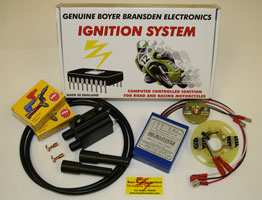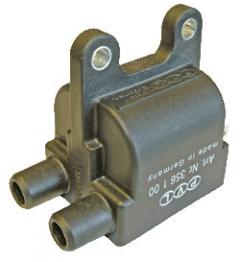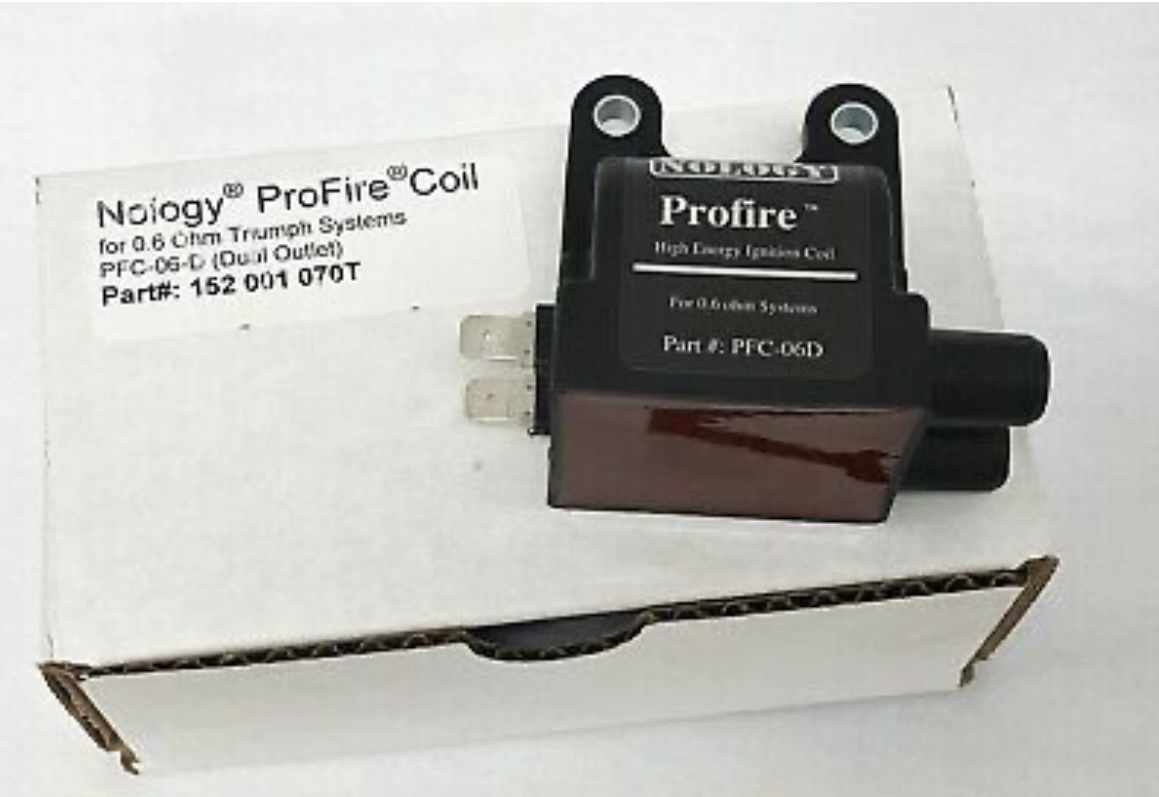seattle##gs
VIP MEMBER
- Joined
- Oct 28, 2014
- Messages
- 2,156
To add another variable, NGK makes a 1K plug cap, looks like it's big brother the 5k, and is still plentiful. I bought 10 of them for $2.50 apiece...shipping brought it to $4.00 apiece.
Not trying to stir the pot, but, is this 5kcap/5k plug information pertinent to a Pazon ignition? I am just beginning my 72 Commando restoration and stacking up parts accordingly.
What is a "special digital ignition coil"?If it's the Pazon Sure-Fire then resistor plugs/caps/wires are not required and only a recommendation.
"We recommend fitting NGK 5K resistor (suppressor) type plug caps (or similar good quality make), but you can also fit non-resistor caps."
Pazon Smart-Fire and Altair both need resistors:
"This system is designed to work only with the special digital ignition coil provided with the system. A 5K resistor plug cap as supplied with the system should be fitted to the h.t. lead. Alternatively, a resistor spark plug can be used. A resistor plug & resistor cap can be used together, although it is not necessary to use both. Attempting to run the system without a resistor type cap or plug will result in excessive radio frequency interference (r.f.i.), which may cause bad running, misfiring and loss of ignition. For reliability, copper or steel cored h.t. lead should be used, we do not recommend using carbon fibre lead."
What is a "special digital ignition coil"?
Doesn't give much detail on what this "digital" coil is or does. Looks exactly like what my modern bonneville has. I bought an aftermarket replacement for it while chasing an issue I was having. Replacement was an exact duplicate of original and ran just same on bike. No mention on spec sheet that it was anything other than a dual ouput lead coil.PAZON Dual Digital Ignition Coil :: Ignition Coils :: Accessories :: Products :: Pazon Ignitions Limited
PAZON Dual Output Digital Ignition Coil (12 Volt).Compatible with Smart-Fire ignition systems. NOT for use with Sure Fire, True Fire or Energy Booster ignitions. Overview of Digital & Analogue Ignition Systems. Classic bike & car electronic ignitions for road & racing.www.pazon.comSmart-Fire Triumph/Bsa/Norton Unit Twin 12 Volt :: Smart-Fire Ignitions :: Products :: Pazon Ignitions Limited
Smart-Fire Triumph/Bsa/Norton Unit Twin 12 volt, high-performance ignition system.12 volt electrics (positive or negative ground).Ideal for competition, highly tuned or fast street bikes. Overview of Digital & Analogue Ignition Systems. Classic bike & car electronic ignitions for road & racing.www.pazon.com
Looks exactly like what my modern bonneville has.
I suspect what Pazon has here is just a dual output coil they supply with their digital EI kits.

I suspect this is true of Boyer and it sounds like the Pazon "digital" coils may really be off the shelf low primary resistance coils.


Did I also mix-up Boyer and Pazon "digital coils"? Should have left that out - as I said, I don't know them.Boyer (PVL)

Pazon (PVL)

Did I also mix-up Boyer and Pazon "digital coils"? Should have left that out - as I said, I don't know them.
Yes, your Bonneville's coils would no doubt be a similar type of digital coil.
Yes, but specifically intended for digital ignitions designed to use them as they are not intended to replace standard or replacement dual output coils because the primary resistance is much lower.
"Compatible with Smart-Fire ignition systems. NOT for use with Sure Fire, True Fire or Energy Booster ignitions."Ignition Coils :: Accessories :: Products :: Pazon Ignitions Limited
Overview of Digital & Analogue Ignition Systems. Classic bike & car electronic ignitions for road & racing.www.pazon.com
Same for Boyer Micro-Power.
"The Micro Power Coils
The miniature digital ignition coils have a very low primary resistance and a very high quality iron core. Single and Dual output types are available as mentioned previously. The HT cables are detachable and the primary connections are by spade terminals.As these coils are controlled by current input and not voltage, up to four coils can be run in series from one ignition unit. With most dual output coils it is good practice to have only one output feeding a compressed cylinder, but with 35,000 volts it is possible to have both outputs feeding a compressed cylinder at one time."

"Why Can't I Use A Micro Power Coil With An MK3 Or Micro Digital System?
The very high currents that would flow would damage both the unit and the coil. the Micro Power coil can only be used with the Micro Power ignition unit; Micro Digital and MK3 ignition units are designed to work with contact breaker type ignition coils only."
What Boyer sells as “digital coils” are CDI coils.


If you measured the leads by themselves, they are suspect. Leads should be 0 ohms (usually). If you measured them with caps but not connected the coils, again suspect since caps should be 0, 5k, or 10k (usually). NY7C is a non-resistor plug so that's fine. Looks like the APP63 is a resistor plug and nominally 5k so that's OK.The dates on this thread are all over the place. Since the title is appropriate, I will post here anyway. I started in 2018 with a '74 mk2 that sat untouched for 34 years. Got it running and have been rebuilding/improving it and learning about it ever since. The bike is running well, no issues with the spark as far as I know but the next item of curiosity is resistance of the spark system. I read a lot of good info on the forum. I have a wassel EI. I just changed plugs from Champion NY7C to Autolite APP63 (recommended by longtime norton owner). Champions ran good for 2 years and were still running good when removed. Coils are original and I did not check those yet. I did a simple resistance check:
Leads: 2800 ohms
Champion NY7C: 50 ohms
Autolite APP63: 5200 ohms
So I went from 2850 ohms (champion plugs) to 8000 ohms (autolite plugs). No difference in running as far as I can tell. Somewhere in this thread I saw 0-10k ohms should be no problem. Any feedback is welcome.
If you measured the leads by themselves, they are suspect. Leads should be 0 ohms (usually). If you measured them with caps but not connected the coils, again suspect since caps should be 0, 5k, or 10k (usually).
 mrretroleads.co.uk
mrretroleads.co.uk
True, but IMHO, they have no place on a bike with the coils mounted to the frame and the engine shaking. In a car suppressed wires make sense because everything shakes together, the lead management is good, and the length generally means that they are in the 5k to 10k range.They could be 'carbon' resistor HT leads (typically around 1- 3k ohms per foot) if not copper/steel cored in which case the caps would normally be non-resistor.
Black 7mm Suppressed Silicone Ht Ignition Lead Carbon Core Cable X 1 Meter - Mr Retro Leads
this is a top quality core lead it has a very soft texture and flexibility as it is silicone, if you need more than one meter just add the amount you need as it will come of a continuous roll then it will come to you in one length for you to … Continue reading "Black 7mm Suppressed Silicone Ht...mrretroleads.co.uk
